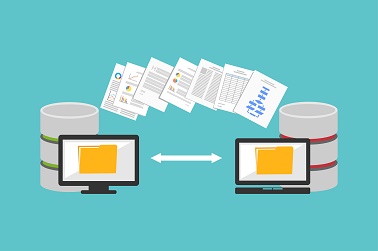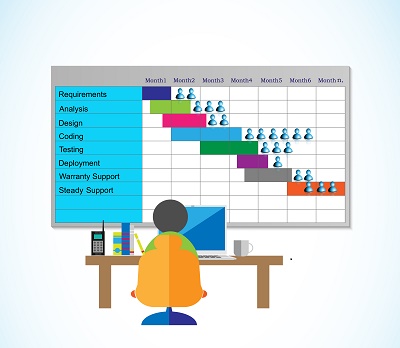Tag: software development challenges
To build or to buy has been a million-dollar question most businesses seek an answer for. This can become more daunting when you consider the numerous factors influencing the decision. To make it less overwhelming, we will discuss factors and tips to help business leaders make informed decisions. This blog also explains the right process to follow once the decision is made.
Build Or Buy: Should You Buy Software or Build It?
Several factors must be analyzed when deciding to buy or build software internally. Here is an analysis of four key points that can help business leaders to make an informed decision that will impact their business growth:
- What is the scope of the problem that you are attempting to solve?
- How complex does the software solution need to fit your business?
- Can the organization leverage exist experts, or will you need to hire more?
- How quickly does the organization need the software?
It is good to remember that there are no one-size-fits for all in this regard. Analyzing these questions will help businesses zero in on one of the two options. Please read on to find out top tips to help companies identify which of these two is most suitable for their business.
Read more: Choosing the right Software Development Vendor
Top Considerations for Companies to Help Recognize Build vs Buy
Deciding to buy or build custom software is not as easy as flipping a coin. Here are the top considerations that will increase the odds of making the right decision:
- Problem – Businesses must give thought to the problem at hand. Is it attempting to solve a common problem or specific to the company alone?
- Funds – Can the company have dedicated funds to host and maintain the software solution, including upfront costs?
- Time – Consider how time-intensive the problem at hand is. Is it just a nagging annoyance or a serious health threat to the company’s survival?
- Strengths and Weaknesses – Analyzing a business’s strengths and weaknesses will help companies choose whether to build or buy. Can the business withstand the risks that may surface with technical debts, quality concerns, opportunity costs, and more?
- Quality – Consider if you can fully focus business efforts on solving this problem without compromising quality.
- Surface-Level Risks – Before buying or in the future with a trial, demo, or quote, reviewing the surface-level risks of buying versus building software is important.
- Data – For certain companies, their data is vital to their competitive advantage. In such cases, it is crucial to consider how the third party may your proprietary data. Consider if there is the possibility of losing access or oversight to customer data or other critical business insights.
- Security – Ensure the company’s accounts are not compromised by finding out if the third party can be trusted and if they use cybersecurity best practices.
- Vendor Reliability – Consider if the third-party vendor is reliable. Does it have the ability to weather a market downturn or other external factors that may impact the business?
Read more: When Does Your Business Need Custom Software Development Solution – Evaluate Now!
If a company decides to build custom software after all these considerations, it is vital that they follow the right process for the successful development of software.
What is The Right Process If You Decide to Build?
Building custom software might be the perfect solution for your business and building it the right way is key to its success. Usually, it is developed by a third party or in-house developers. Custom solutions ensure features and functionality with the company’s needs in mind. As a result, businesses enjoy increased productivity and growth.
To get started, here is the right process companies can follow:
1. Define your organizational needs
First, determine the current business process, expectations, and verifiable success. Talking to experts, finding out why the changes are necessary, and sketching out the workflows will help ensure a smooth project management process.
2. Resist the temptation to keep everything in-house
It may be tempting to handle all processes in-house to save money. However, working with your own IT team could cause a slowdown in the company operations as they already have their daily work. Here, outsourcing certain tasks makes the most sense. Consider working with a vendor with a verifiable track record in building custom software for other companies.
3. Be practical
To keep the project on track, create a realistic plan together with all involved in the project. This will allow companies to set specific deadlines. Knowing the timeline will help in allocating funds when required.
4. Test and test
Before implementing the new custom software, it must go through two levels of test. One is technical testing by IT professionals and developers to ensure all elements are working. The second is user testing to see if the software works as intended.
5. Document each stage
Documentation must include the team members’ details, roles and responsibilities, deadlines, and expectations for the project. It must also include a test plan, checklist, scope statement, training plan, implementation plans, and detailed user documentation.
Top 5 Trends in Custom Software Development Today to Look Out For
The custom software market is growing exponentially. Some software development trends stand out. These trends are influenced by the need for businesses to leverage advancing technology.
- Cloud technology: The pandemic shut the door on data on-site and opened the door to cloud technology. Developing cloud-native applications will likely continue as many companies still use remote work setups.
- Internet of Behavior: The Internet of Behavior, or IoB, studies customer behavior through the data gathered from various devices. This data allows businesses to understand how to improve the quality of their products and services.
- Blockchain: Blockchain is used in businesses to track records without worrying about discrepancies.
- Low-code and No-code development tools: Workers can create programs and sites even if they lack coding knowledge. According to research, by 2024, 65% of software projects will be done through low-code or no-code development.
- Software integration: Software integration can provide a seamless user experience. Additionally, it helps the company save time and increase productivity.
Read more: Low Code/No Code Development with SAP BTP: How It Is Turning the Future of Enterprise Resilience
Build For the Future
Building custom software allows organizations to use technology that addresses their unique needs. Following the right process can ensure they are implemented in a way that supports and advances business growth.
Custom software development is our forte, and we have been able to help many clients get exactly what they need from their software.
Give us a call, and let’s discuss what we can do for your business.
Stay up to date on what's new

Featured Blogs
Stay up to date on
what's new



Talk To Our Experts
Stay up to date on what's new

Featured Blogs
Stay up to date on
what's new



Talk To Our Experts
Enterprise software is in the midst of a golden run now, as more and more enterprises seek to ride the digital and mobility wave to improved efficiency and success. However, rolling out enterprise software is fraught with many challenges.
Here are the top challenges to overcome, to ensure the success of enterprise software.
-
Reconciling with the Changing IT Infrastructure Landscape
IT is always in a state of continuous churn. What is trendy tomorrow may be out of favour, and even obsolete in a few weeks. What was touted as the bright new thing may soon fade off as a false start, with HTML5 being a case in point. In such a state of affairs, enterprise software developers are hard pressed to retain relevance amidst the changing IT infrastructure landscape.
The obvious solution is to future-proof the application, but there is no clear-cut answer on how.
A solution finding increasing number of takers is low-code platforms. Enterprise app developers have long discovered custom code as costly, time-consuming to develop, and difficult to maintain or make changes. In contrast, low-code application platforms reduce the quantum of hand-coding, not just accelerating the process, but also enabling fast reconfiguration of apps, quick modification of logic flows, and rapid delivery of new UI elements, as needed. Co-opting new features and integrations become a piece of cake, sans sizable investment in infrastructure.
-
Relevance in an Extremely Fluid Business Environment
Side by side with the changes in the IT infrastructure landscape, the business environment also remains extremely fluid. What was a pressing need at the time of conceptualization may already have become obsolete by the time the software rolls out.
In such a scenario, trying to get everything right in one go is a sure recipe for disaster. A far better approach is to undertake small, iterative releases. Such releases make it easy to make changes, and also offer valuable learning experiences that facilitate continuous improvements.
-
Challenges of Integration
While coding takes up a significant chunk of the time, it is just the easy part. Prototyping, designing the user experience and user interface, testing the application on different devices, organizing and running field trials, figuring out how to deploy the application in legacy systems, how to integrate the app with the CRM, ERP or other running systems, how to migrate the data, and how to safeguard the migrated data are all just as important, and take up significant chunk of time as well.
There is no shortcut to resolve integration challenges. The best approach is a thorough planning phase, where all possible issues are foreseen and solutions provided.
-
Data Migration Challenges
Instances of the application development team, having completed the project, patting themselves on their back, oblivious to the challenges ahead, are all too common.
The real challenge starts when trying to get the software up and running, and among the key challenge is data migration.
Data may reside in disparate legacy repositories and may be non-compatible with the new system. There may not be any business of validation rules in place to determine the process of migration. Many companies fail to undertake an as-is assessment, to understand the quality of the data, before starting the data migration job. Such an assessment identifies what is missing, and enable companies to assess the work required to migrate the legacy data successfully.
-
The Challenge of Costs v/s Expectation Trade-Off
If wishes were horses, beggars would ride. While there are no limits on imagination and intentions, often considerations of cost bring in a reality check. The practical approach to enterprise application development is to make a trade-off between cost and functionality, to strike an optimal balance.
Nevertheless, often the cost required to roll out enterprise software is grossly underestimated, more so with the case of mobile software. The biggest distortion is in maintenance, with the need to push updates at regular intervals to cope with the ever-changing landscape. The maintenance cost of a software application over its lifetime will almost certainly overshadow the initial development costs.
-
Change Management Challenges
The development team may have just resolved all the technical challenges, be it the product simply not installing, data migration, and everything else. But if the inevitable resistance to change is not factored in, it isn’t over yet.
A big reason for resistance is not involving stakeholders, especially end users in the development or procurement process. Managing resistance to change, and also rolling out an optimal app requires involving stakeholders, including end users, early in the development process. Take suggestions on what to include, build prototypes, and seek feedback. If end users and all stakeholders feel they have a stake in the new software and were instrumental in its development, they would consider it as their baby and support it.
Users may feign compliance if a new suit is imposed by dint of authority, but they would almost certainly run to the IT team for the flimsiest of reasons. Trying to impose a half-baked software just makes it worse.
-
Challenges Related to Feedback-Development Loop
Change management gets even more complicated than involving the stakeholders. Even without resistance, end users would have a lot of feedback on usability issues or some requirement missing. Conversely, there could be some unnecessary features.
Enterprise software development is a continuous process, rather than an on-off project. The feedback from one iteration constitutes the basis for the next wave of improvements, and added functionality, with the cycle continuing.
Trying to develop everything in-house is foolhardy. Many web applications require obvious skills such as HTML, CSS, and JavaScript. Many enterprises are mistaken into thinking these are the only skills required, and their in-house team would be able to handle it. Just because someone has the raw technical skills, it doesn’t make them competent to adapt the same easily, to new domains. Your best approach is to partner with us, to gain the advantage of our wide experience, and availability of a wide talent pool, competent in various situations and approaches.
Stay up to date on what's new

Featured Blogs
Stay up to date on
what's new

































































